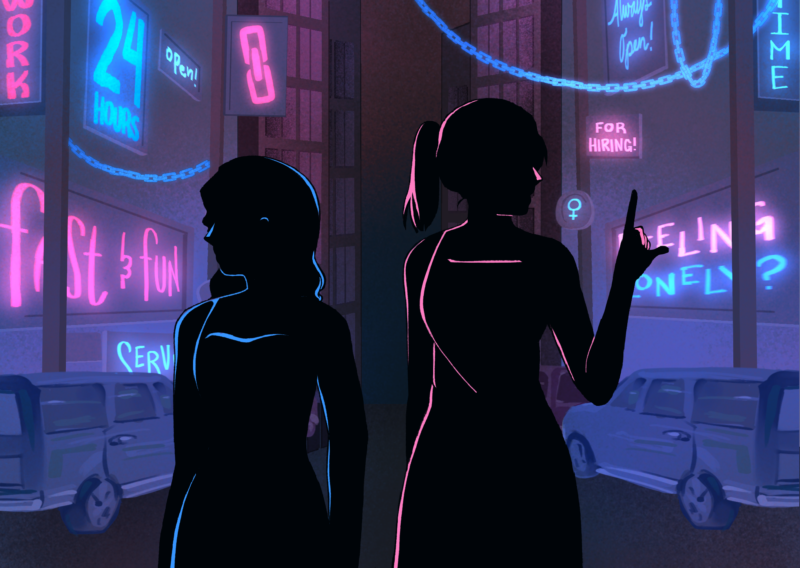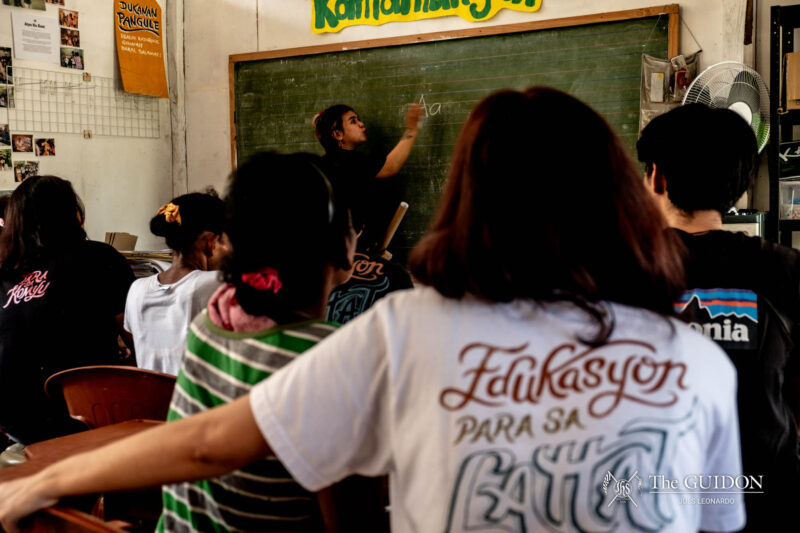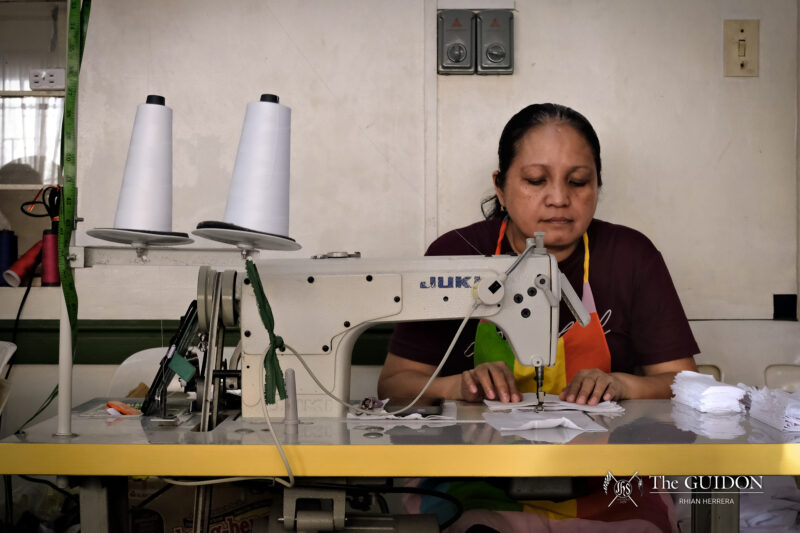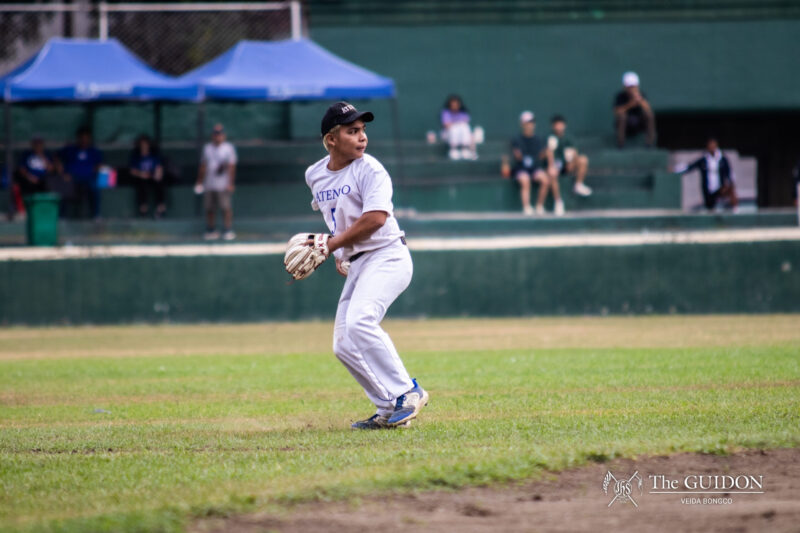The speedometer reads 130 kilometers per hour as an FX vehicle swiftly rolls down the road towards an expressway. As the driver tries to swerve from the inner lane to the outer lane, the girl in the passenger seat finds herself, along with seven people, in the beginning of a car accident. After toppling over twice, the car lands on its left, denting the roof and hood. Her head hits the car door, leaving behind an imprint of her head on the metal.
Bea Gomez (IV BS Psy) says this was the chain of events she recalls from the car accident she was in two years ago—thankfully, no choir of angels and blinding white light.
Survivor
The night of the accident, what Bea remembered most before her blackout were the muffled sounds around her. “Everything was just [an] echo, like when you put your hands to your ears,” she says. Witnesses told her the blackout lasted for 45 minutes to an hour. “It’s not like the near-death experience where you [supposedly] see a light or a tunnel. That’s why I knew I was not going to die.”
She remembers waking up in a stretcher as she was being moved to the emergency room of the South Superhighway Medical Center. “I woke up for five seconds to see where I was, then I blacked out again,” she says. Thirty minutes after, she woke up for five minutes, which was enough time to tell the attending doctor details about herself.
Bea’s major injury was a cracked skull. A blood clot had to be removed in order to avoid disrupting the blood supply to the brain. Her facial injuries included a cut near her eye—“I call it a Nike swoosh”—which was three inches wide and four centimeters deep, missing the nerve that allows blinking by only a few millimeters.
Another car crash survivor, Edward dela Vega (II BS ME) attests to having a similar experience. Driving down from Baguio with five friends, a friend’s father, and house helps, Edward remembers a quick swerving motion followed by a bump on the road. He says most of the events that succeeded the crash were told to him during his recovery. “I don’t remember being thrown out of the car, hitting my leg, or burning my arm,” he says.
Edward had to be rushed to a hospital in Manila via ambulance. There, he was informed that his friend Joey was already brain dead. “It was a big hit [because] everything was happening so quickly,” he says. “I don’t remember the pain [because] you don’t really think of yourself. You want to pray [that] your friends are okay.”
In Lila Santelices’s (III AB Eu) case, it was her sister, Tara (AB PoS ‘07) who had a near-death experience. According to Lila, it was midnight when her sister and a friend were in a public jeep heading home, only to find out that they were seated beside a robber who would be aiming a gun at them.
When Tara resisted to the robber’s demands, he shot her in the head. “She didn’t lose consciousness yet,” says Lila, relating the story from direct witnesses. “My sister’s friend asked the driver to go to the nearest clinic but the facilities were clearly not enough.”
At 2:00 am, Lila was the first in their family to know about what happened. After the family of Tara’s friend relayed the news on the phone, Lila and her parents rushed to the hospital. They found Tara in a comatose. To date, Tara has not fully recovered from the incident.
Changing the comfort zone
When one experiences a drastic change or event in one’s life like an accident, Psychology Lecturer Gari Ramos says that a schema—the way people define themselves to be—also changes.
She says there are two processes by which a schema is affected: assimilation and accommodation. “Assimilation is when you say ‘I’ve grown so much because [the experience has] added to how I know myself,’” she says. “When, however, the new thing that we experience doesn’t fit into our schema, then we accommodate. We make a new schema.”
This is similar to the experiences of accident survivors, says Ramos, where they may have experienced major injuries or losses. “If it has changed their life in a significant way, like there’s a permanent injury that they have to deal with [or they] have lost somebody because of what happened, it’s more likely that they will change who they are.”
Rehabilitation Medicine Physician Dr. Ronaldo Calma, of the De Los Santos-STI MegaClinic says that aside from the psychological, there are other factors one has to deal with in rehabilitation.
“For serious accidents, it’s likely [to be] physical pain and multiple injuries,” he says. The other factor involves temporal incapacity of a person. “[Patients] will need help or assistance from another person, whether it is a nurse, a caregiver, or a relative, [even for tasks] as simple as going to the bathroom, taking a bath, or changing their clothes.”
While an individualized program of recovery is created for each patient, Calma says, “Our goal is always to determine the highest possible functioning level. You have to look at the patient in totality and treat [him] on a holistic manner, not just the physical injury.”
Saved in chaos
In Edward’s case, a near-death experience did not necessarily mean seeing the River Styx and almost crossing the other side. “When I see car crashes [on television I remember thinking that] I used to laugh at that. It puts things into perspective,” he says. “It’s not that I almost died, but that I have a friend who died. I hope it wouldn’t take such a big thing for [people] to value the things they have.”
For Bea, the experience resulted to a severed friendship and life lessons from the accident. “The driver’s best friend died in the accident. The driver [who was] my friend left for the States. She disconnected from everyone,” she says. “I’m [also] more cautious. I know a seatbelt can save my life. [And I’m] also not too impulsive because that night was a very impulsive night.”
Lila, meanwhile, still feel disbelief at times. “I always think like it happens to other people but never to us, but I have moved on from asking why it happened to us,” she says. “I’m just hoping that she [Tara] can still recover completely. That she can still talk, that she can live her life normally. Sana lang (I’m just hoping).”






